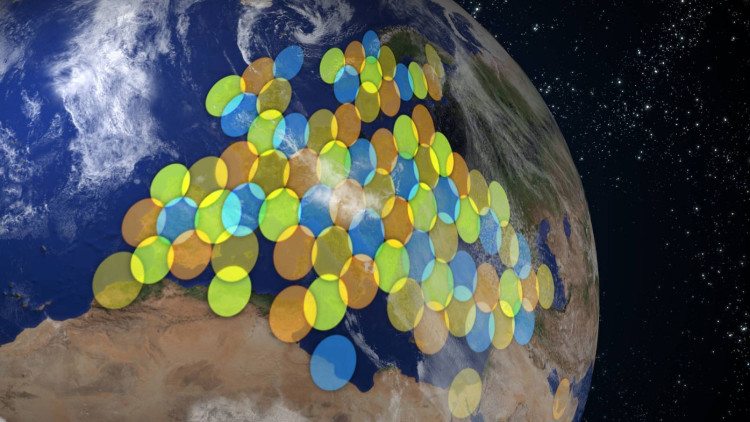As the need of people and organizations to use the internet on a day to day basis grows, internet technology is also getting more advanced. Companies that provide internet connection are now committed to high speed access to meet the need of subscribers requiring more bandwidth in their work and daily operations.
“Fortunately, satellite technology is already here and with it, internet access can be provided to remote places particularly in areas where a DSL or cable TV is not available. The rural areas benefit greatly from this advanced technology.
Internet access via satellite began a few years ago with KA-SAT among the pioneers. Eutelsat put KA-SAT in orbit in December 2010 covering most parts of Europe and providing broadband with a speed of 70 Gbps distributed over 80 spot beams. Currently, KA-SAT’s high throughput satellite is linked to a ground network composed of 10 stations and is capable of providing internet access beyond 90 Gbps.
How Does The Satellite Work?
Being a satellite, this technology is up in space and does not use telephone lines or cable systems. Instead, it makes use of a satellite dish that receives signals and delivers high bandwidth services to a wide area. With the dish, two-way data communication is possible at a much faster speed.
Satellites are guaranteed to provide fast internet access at 10 times the speed of a normal modem. They can deliver speeds of up to 50 Mbps for downloading data and 20 Mbps for upstream. For consumers, the speed is 22 Mbps for download and 6 Mbps for upload and for B2B it can be customized according to their needs.
The issue, however, is the distance of these satellites from the earth which affects signal strength and latency. Once signal is affected, internet speed also suffers. For this reason, internet service providers that utilize satellite technology are considering using a shorter distance for orbiters to make internet speed much faster. The drone aircraft that operates on solar energy is also foreseen to be the future.
Multi-spectrum transmissions are another positive development in satellite systems. Through multi-spectrum devices, different wavelengths are able to carry the same signal which can penetrate through vegetation and ensure much better performance. Another advantage is its better reception even in unfavorable weather conditions.
Why Use Satellite Internet
Compared to other modern forms of communication, satellite technology is considered the most environment friendly of long distance communication today. With its wide coverage, it is able to reach remote and isolated areas and still provide high-speed internet connection. And this is possible without needing ground infrastructure or to install landlines. Only smaller and less costly terminals are being utilized to ensure fast speed connectivity.
Another plus of satellite internet is its availability all the time. It does not depend on a telephone line or cable and you don’t even need to start up your internet because your connection is always on.
Coverage is not an issue as this advanced technology provides fast broadband access everywhere even in areas where no technology is available. This is attributed to the geostationary orbit of a satellite that allows its signal to reach any place in the world. And since it is orbiting in space, establishing communication worldwide is not a problem compared to using telephone lines and cables. In addition, satellite internet lets people go online using varied devices including their favorite mobile gadgets.
One of the future uses of satellite technology foreseen by experts is in environmental campaigns particularly in disaster preparedness and emergency response. As teams respond to emergencies and disasters, they would still have internet access via satellite whether they are on the air or on the ground. In short, satellite internet will play a significant role in information dissemination.
Apart from emergencies, aircraft terminals and airline passengers are also foreseen to benefit greatly. Experts are also hopeful that internet access will become more affordable in the coming years and that the billions of people who still don’t have internet access will be able to go online.
Originally posted on September 17, 2015 @ 8:45 am


I didn’t know that satellite internet was a working idea, but I can’t wait to try it. I’m used to using the internet on my phone in a lot of different places, thanks to data coverage, but I’d love to be able to use my laptop or something when I’m in the mountains or something. I think it’ll be great for emergency response, like you said. It would be much easier to coordinate a response if everyone had access to the internet.